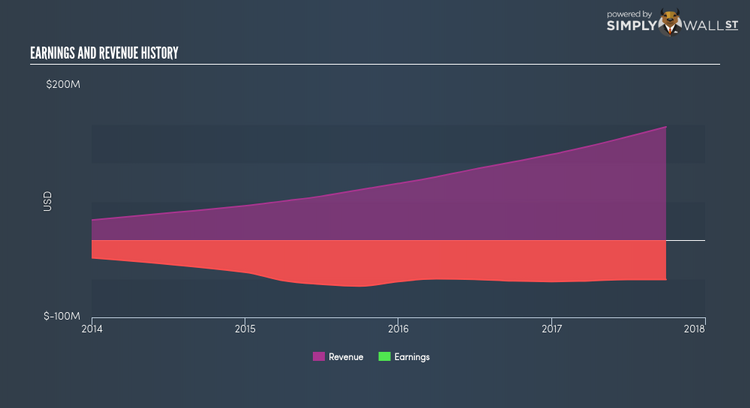One Thing To Consider Before Buying Instructure Inc (NYSE:INST)

If you are a shareholder in Instructure Inc’s (NYSE:INST), or are thinking about investing in the company, knowing how it contributes to the risk and reward profile of your portfolio is important. INST is exposed to market-wide risk, which arises from investing in the stock market. This risk reflects changes in economic and political factors that affects all stocks, and is measured by its beta. Not all stocks are expose to the same level of market risk, and the broad market index represents a beta value of one. A stock with a beta greater than one is considered more sensitive to market-wide shocks compared to a stock that trades below the value of one.
See our latest analysis for Instructure
What is INST’s market risk?
Instructure’s five-year beta of 1.76 means that the company’s value will swing up by more than the market during prosperous times, but also drop down by more in times of downturns. This level of volatility indicates bigger risk for investors who passively invest in the stock market index. Based on this beta value, INST will help diversify your portfolio, if it currently comprises of low-beta stocks. This will be beneficial for portfolio returns, in particular, when current market sentiment is positive.
Does INST’s size and industry impact the expected beta?
With a market cap of US$1.11B, INST falls within the small-cap spectrum of stocks, which are found to experience higher relative risk compared to larger companies. In addition to size, INST also operates in the internet industry, which has commonly demonstrated strong reactions to market-wide shocks. Therefore, investors may expect high beta associated with small companies, as well as those operating in the internet industry, relative to those more well-established firms in a more defensive industry. This is consistent with INST’s individual beta value we discussed above. Fundamental factors can also drive the cyclicality of the stock, which we will take a look at next.
Is INST’s cost structure indicative of a high beta?
An asset-heavy company tends to have a higher beta because the risk associated with running fixed assets during a downturn is highly expensive. I examine INST’s ratio of fixed assets to total assets to see whether the company is highly exposed to the risk of this type of constraint. Given that fixed assets make up less than a third of the company’s total assets, INST doesn’t rely heavily upon these expensive, inflexible assets to run its business during downturns. As a result, the company may be less volatile relative to broad market movements, compared to a company of similar size but higher proportion of fixed assets. This outcome contradicts INST’s current beta value which indicates an above-average volatility.
What this means for you:
You could benefit from higher returns during times of economic growth by holding onto INST. Its low fixed cost also means that, in terms of operating leverage, it is relatively flexible during times of economic downturns. What I have not mentioned in my article here are important company-specific fundamentals such as Instructure’s financial health and performance track record. I urge you to complete your research by taking a look at the following:
1. Future Outlook: What are well-informed industry analysts predicting for INST’s future growth? Take a look at our free research report of analyst consensus for INST’s outlook.
2. Financial Health: Is INST’s operations financially sustainable? Balance sheets can be hard to analyze, which is why we’ve done it for you. Check out our financial health checks here.
3. Other High-Performing Stocks: Are there other stocks that provide better prospects with proven track records? Explore our free list of these great stocks here.
To help readers see pass the short term volatility of the financial market, we aim to bring you a long-term focused research analysis purely driven by fundamental data. Note that our analysis does not factor in the latest price sensitive company announcements.
The author is an independent contributor and at the time of publication had no position in the stocks mentioned.

